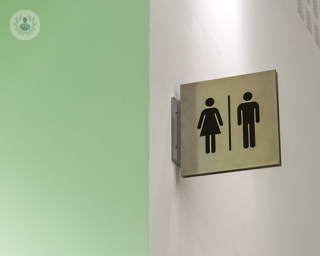Pelvic floor rehabilitation
Mr Rufus Cartwright - Obstetrics & gynaecology
Created on: 08-27-2013
Updated on: 09-26-2023
Edited by: Karolyn Judge
What is pelvic floor rehabilitation?
Pelvic floor rehabilitation, or pelvic floor therapy, involves strengthening the muscles around your bladder, vagina or penis, and back passage. It is performed by physiotherapist with specialist training in bladder, bowel and pelvic problems.

Why is it done?
Pelvic floor rehabilitation is often recommended as a treatment for women who have given birth and as a result experienced a tear or weakening in their pelvic muscles. However, pelvic floor rehabilitation can also be helpful for men and women experiencing:
It may also be recommended if you have had surgery on your pelvic floor and the muscles have been weakened as a result.
What does it involve?
Pelvic floor rehabilitation is carried out by a specialised physiotherapist and generally involves a series of appointments.
The first appointment will include an assessment. This takes place in a private setting, where the physiotherapist carry out an examination of your pelvic floor to get an idea of the strength of your muscles.
In women, this involves feeling the vaginal walls near the bladder. You should let the physiotherapist know if you might be pregnant, have any form of vaginal infection, or have an allergy to latex.
You will only have an examination if you have given your consent.
Following the assessment, there are a number of treatment options:
Pelvic floor exercises
Most people will be given advice on how to carry out pelvic floor exercises. Doing these over a period of a few months is usually very effective in strengthening the muscles. In some cases you might make use of vaginal cones to “weight-train” your muscles.
Changes to diet
In some cases, the physiotherapist might give you advice on changes to your diet or drinking habits to mitigate problems
Biofeedback and electrical stimulation
Biofeedback and electrical stimulation are two forms of therapy that can help you if you struggle to find your pelvic floor muscles, and are therefore struggling to do the exercises
How do you prepare for the assessment?
You don’t need to bring anything or wear any special clothes, but it is always helpful to have a list of any medication you take.












